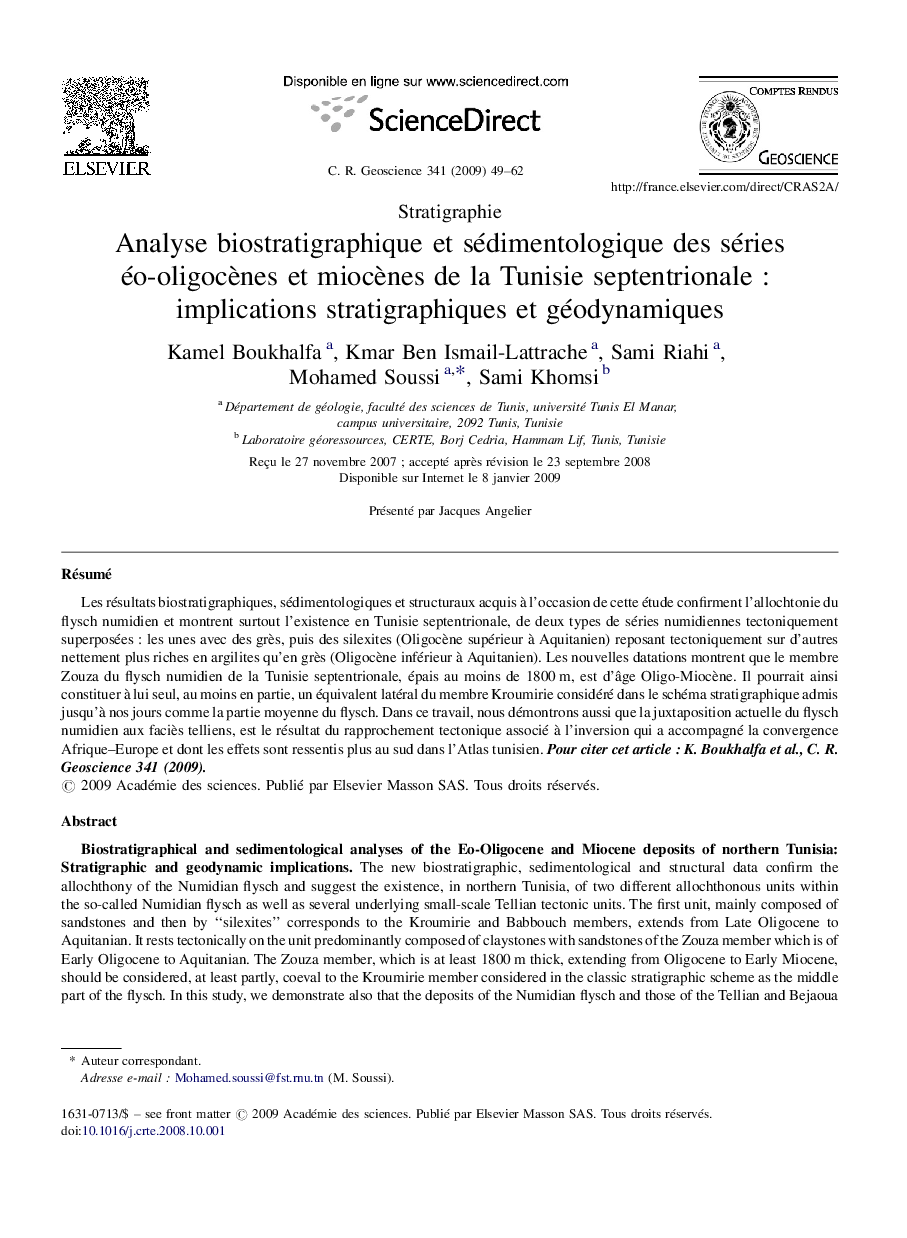| Article ID | Journal | Published Year | Pages | File Type |
|---|---|---|---|---|
| 4462870 | Comptes Rendus Geoscience | 2009 | 14 Pages |
RésuméLes résultats biostratigraphiques, sédimentologiques et structuraux acquis à l’occasion de cette étude confirment l’allochtonie du flysch numidien et montrent surtout l’existence en Tunisie septentrionale, de deux types de séries numidiennes tectoniquement superposées : les unes avec des grès, puis des silexites (Oligocène supérieur à Aquitanien) reposant tectoniquement sur d’autres nettement plus riches en argilites qu’en grès (Oligocène inférieur à Aquitanien). Les nouvelles datations montrent que le membre Zouza du flysch numidien de la Tunisie septentrionale, épais au moins de 1800 m, est d’âge Oligo-Miocène. Il pourrait ainsi constituer à lui seul, au moins en partie, un équivalent latéral du membre Kroumirie considéré dans le schéma stratigraphique admis jusqu’à nos jours comme la partie moyenne du flysch. Dans ce travail, nous démontrons aussi que la juxtaposition actuelle du flysch numidien aux faciès telliens, est le résultat du rapprochement tectonique associé à l’inversion qui a accompagné la convergence Afrique–Europe et dont les effets sont ressentis plus au sud dans l’Atlas tunisien.
The new biostratigraphic, sedimentological and structural data confirm the allochthony of the Numidian flysch and suggest the existence, in northern Tunisia, of two different allochthonous units within the so-called Numidian flysch as well as several underlying small-scale Tellian tectonic units. The first unit, mainly composed of sandstones and then by “silexites” corresponds to the Kroumirie and Babbouch members, extends from Late Oligocene to Aquitanian. It rests tectonically on the unit predominantly composed of claystones with sandstones of the Zouza member which is of Early Oligocene to Aquitanian. The Zouza member, which is at least 1800 m thick, extending from Oligocene to Early Miocene, should be considered, at least partly, coeval to the Kroumirie member considered in the classic stratigraphic scheme as the middle part of the flysch. In this study, we demonstrate also that the deposits of the Numidian flysch and those of the Tellian and Bejaoua group, outcropping to the south, do not belong to the same sedimentary system. Their current juxtaposition resulted from the thrusting of the Numidian flysch southwards during the inversion phase that accompanied the convergence of Africa and Europe.
